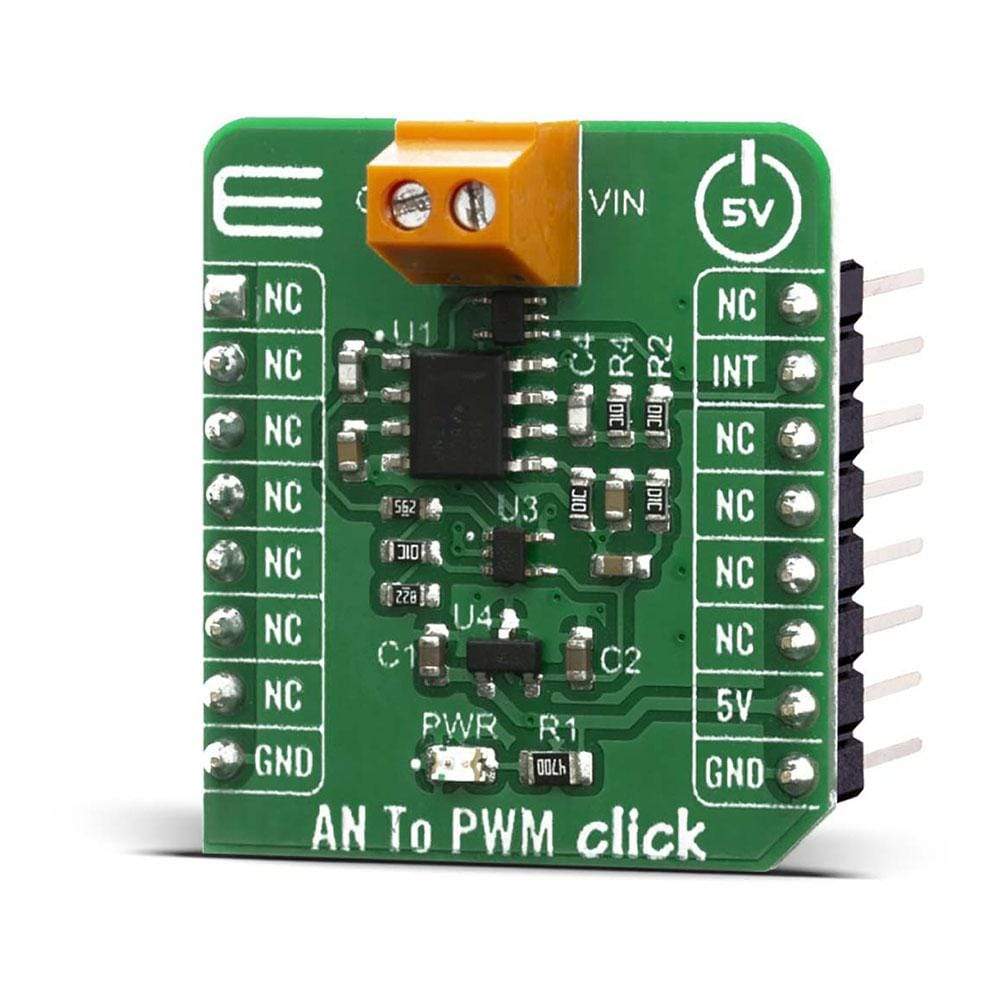
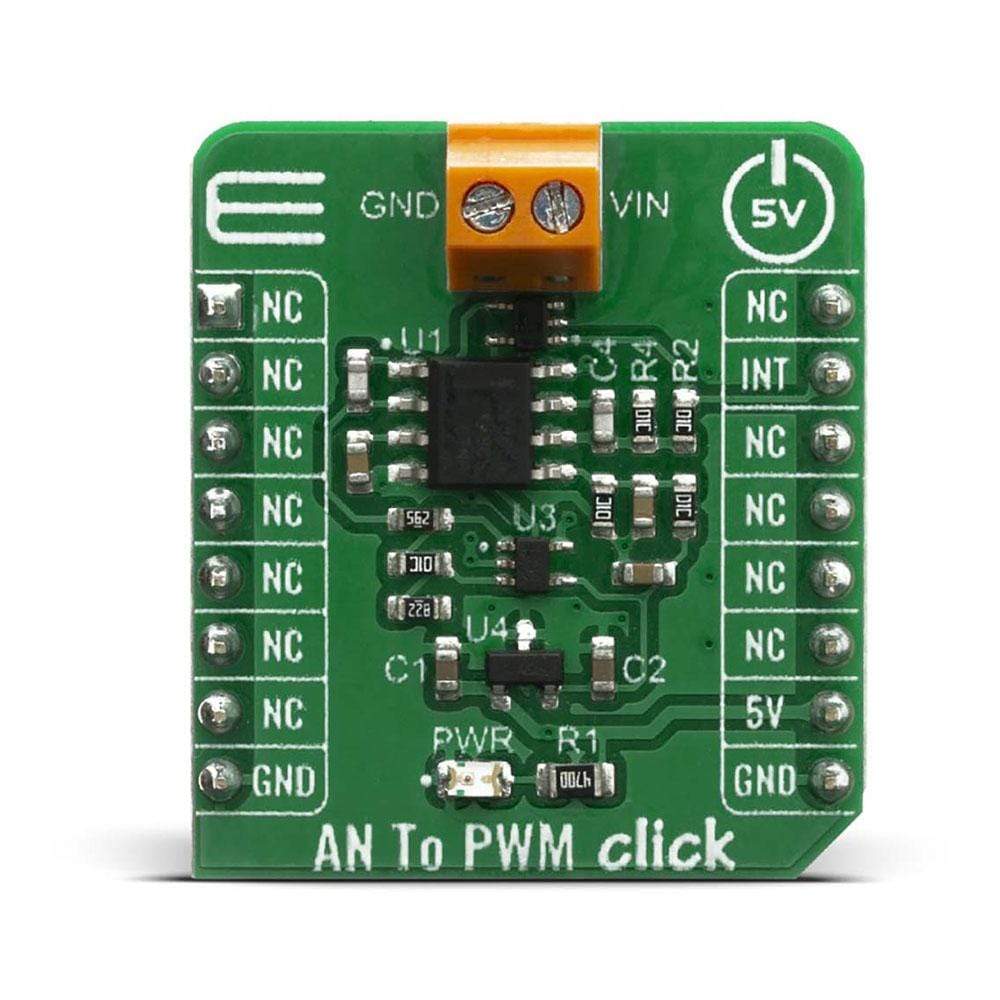
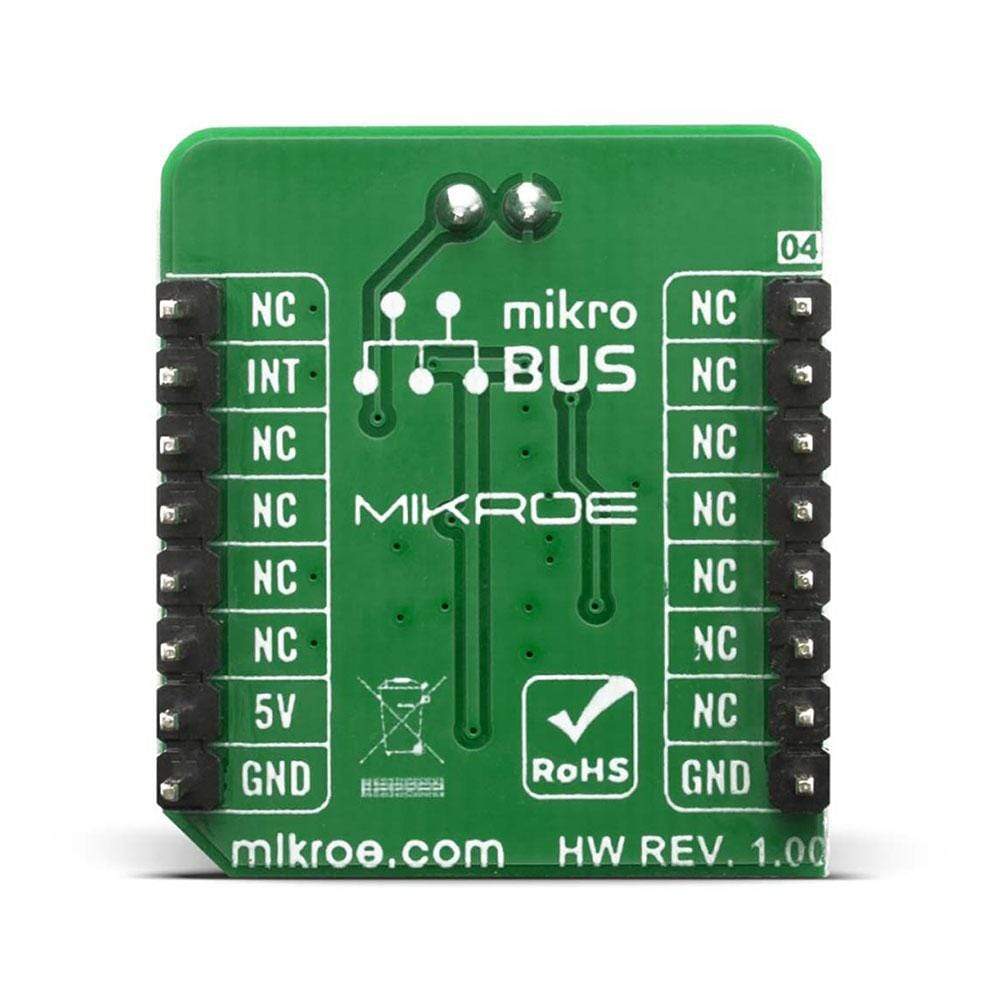
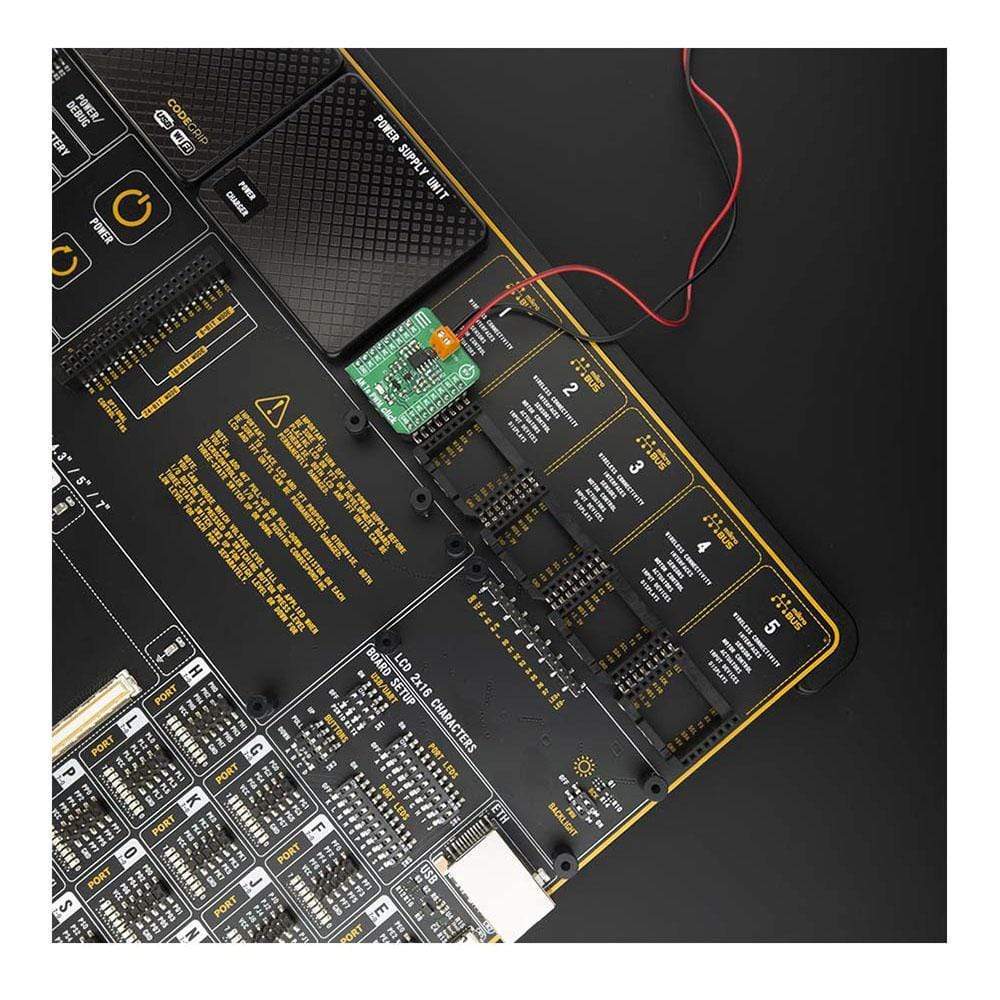
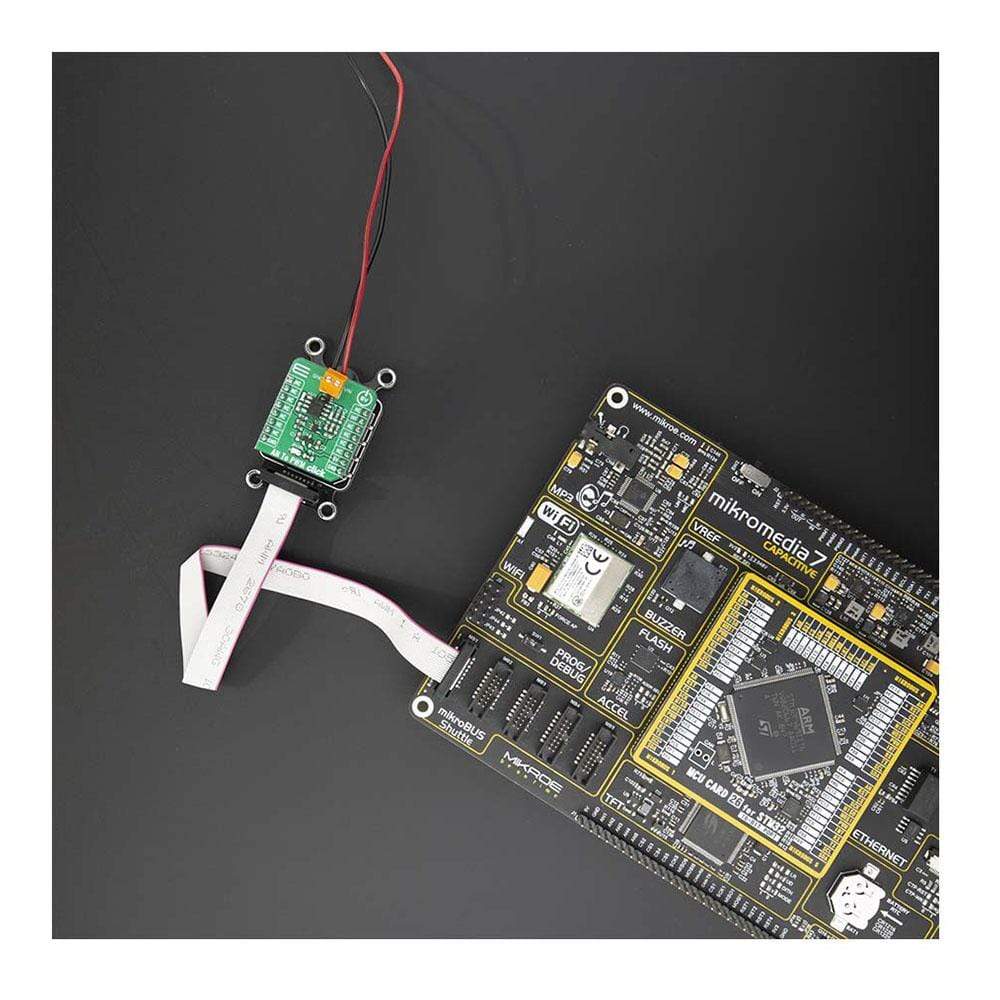

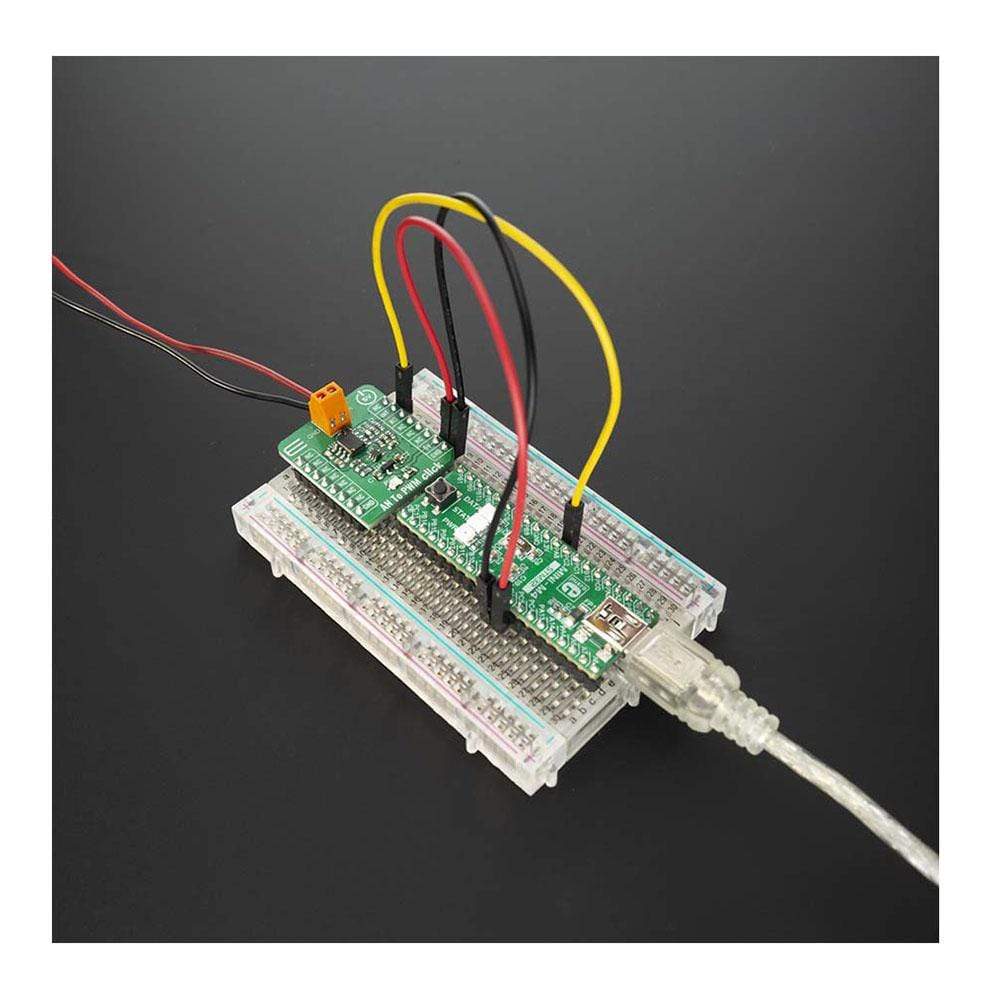
Overview
The AN to PWM Click Board™ is a device that converts the value of the input analogue signal with virtually any wave shape to a fixed frequency PWM voltage output, with a duty cycle proportional to the input voltage. It has a linear response, and by applying a signal with the voltage between -2.5V to +2.5V on its input, the Click Board™ will generate a pulse width modulated (PWM) output voltage, with a duty cycle ranging from 0% to 100%.
The AN to PWM Click features very good linearity, covers a positive and negative input voltage range and it has good temperature stability. These features allow this device to be used in various voltage to frequency applications, such as AD conversion, inspection, test and measurement equipment, while it can also be used as the variable clock signal generator.
Downloads
Le Click Board™ AN to PWM est un dispositif qui convertit la valeur du signal analogique d'entrée avec pratiquement n'importe quelle forme d'onde en une sortie de tension PWM à fréquence fixe, avec un cycle de service proportionnel à la tension d'entrée. Il a une réponse linéaire et en appliquant un signal avec une tension comprise entre -2,5 V et +2,5 V sur son entrée, le Click Board™ générera une tension de sortie modulée en largeur d'impulsion (PWM), avec un cycle de service allant de 0 % à 100 %.
Le convertisseur AN vers PWM Click présente une très bonne linéarité, couvre une plage de tensions d'entrée positives et négatives et présente une bonne stabilité de température. Ces caractéristiques permettent à cet appareil d'être utilisé dans diverses applications de tension en fréquence, telles que la conversion AN, l'inspection, les équipements de test et de mesure, tandis qu'il peut également être utilisé comme générateur de signal d'horloge variable.
| General Information | |
|---|---|
Part Number (SKU) |
MIKROE-4060
|
Manufacturer |
|
| Physical and Mechanical | |
Weight |
0.018 kg
|
| Other | |
Country of Origin |
|
HS Code Customs Tariff code
|
|
EAN |
8606018717170
|
Warranty |
|
Frequently Asked Questions
Have a Question?
Be the first to ask a question about this.







